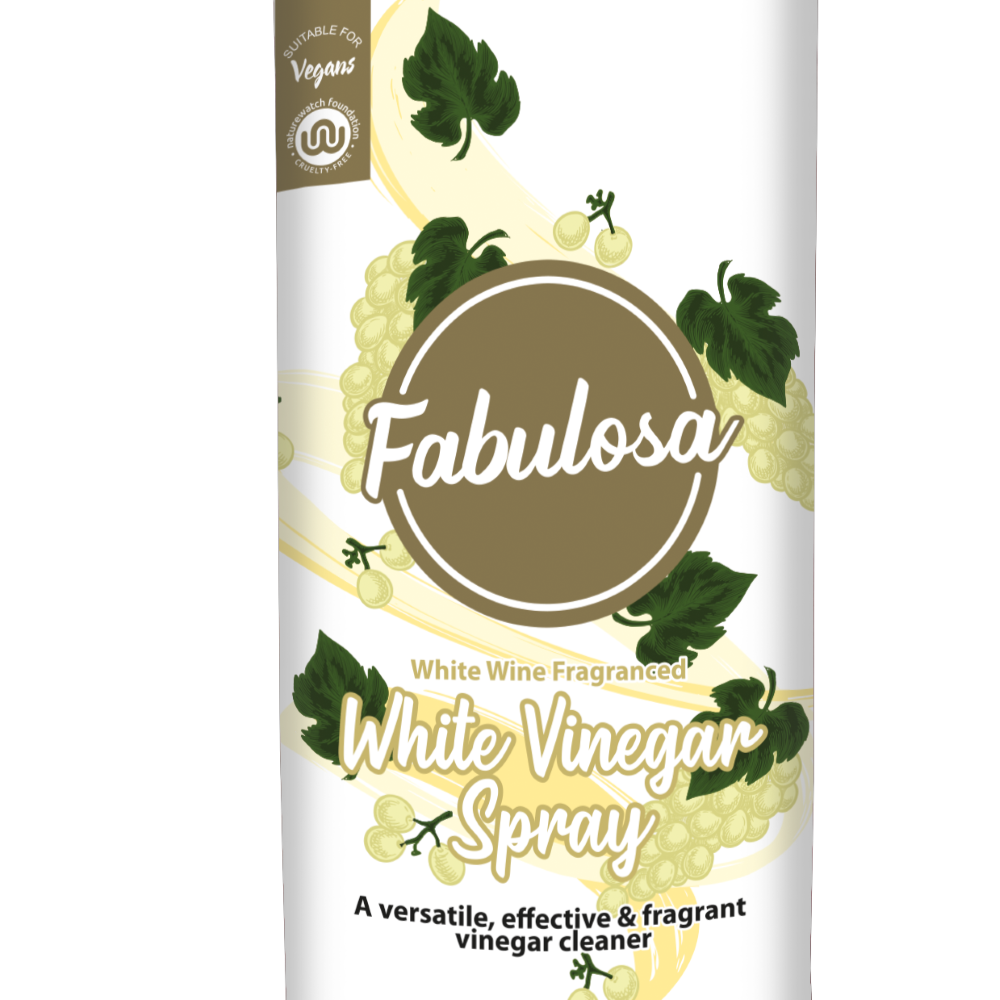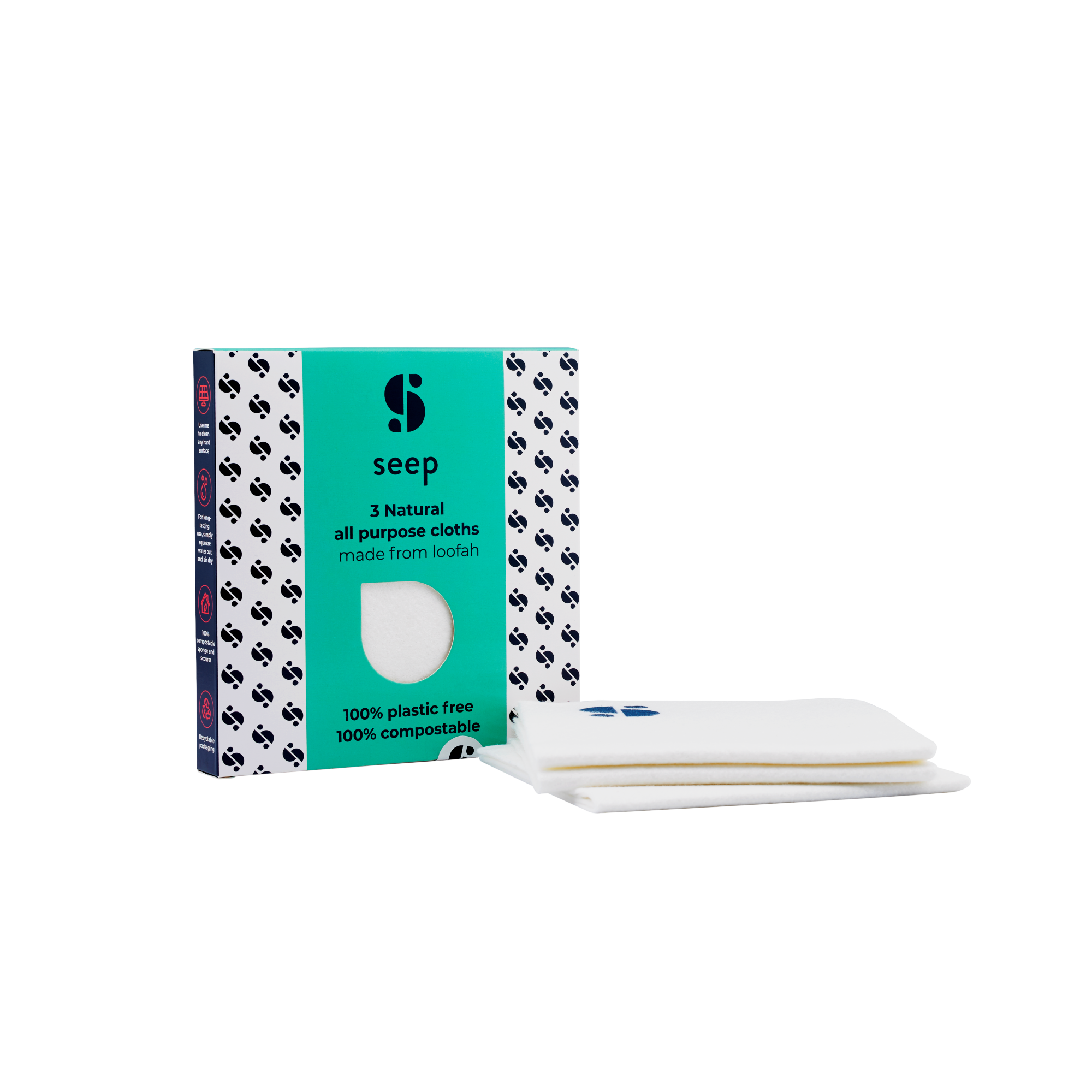How to clean a multi-cooker and keep your appliance in top condition
Banish stubborn food stains and get your multi-cooker squeaky clean with our top tips
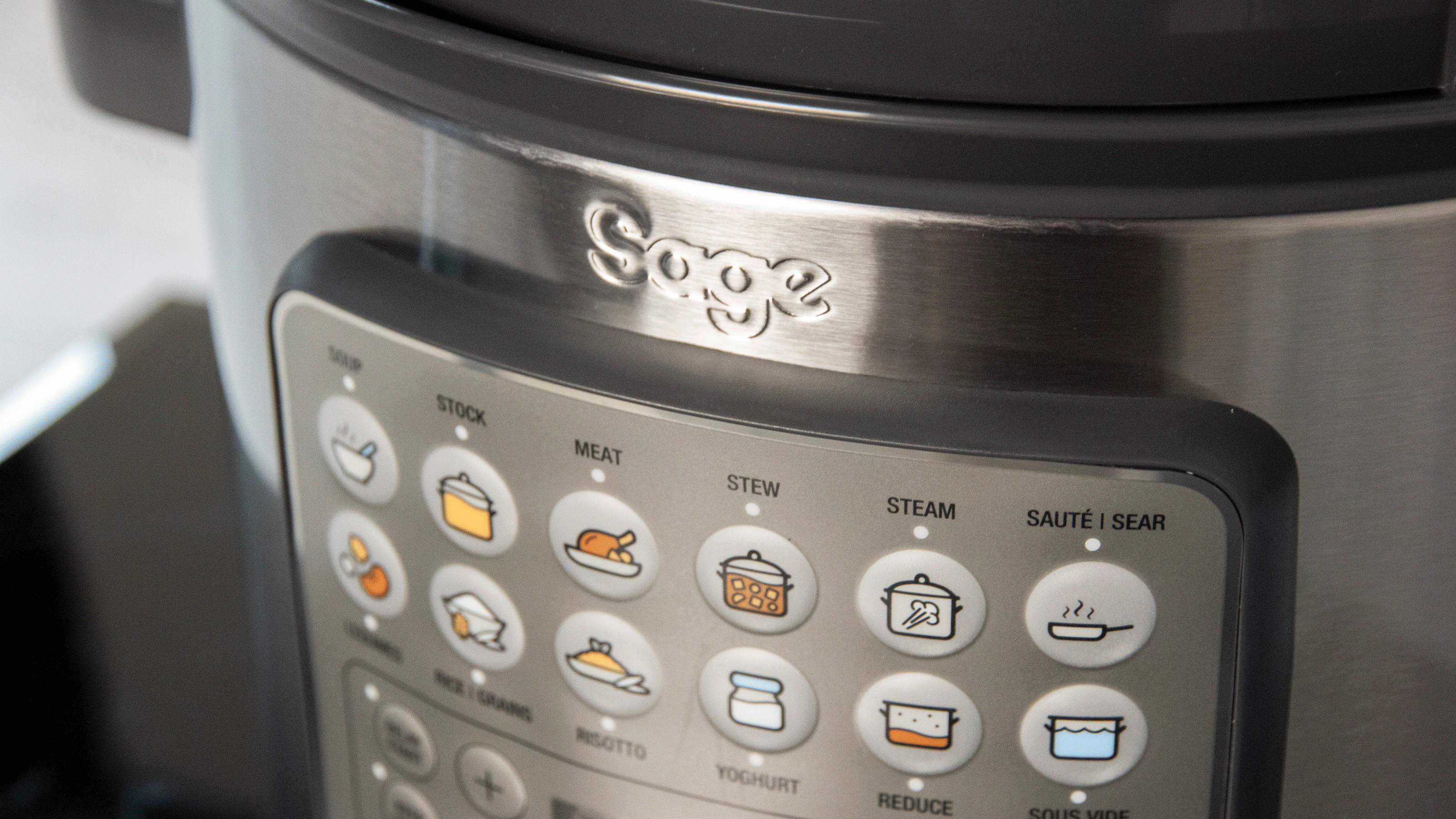

If you're lucky enough to have a multi-cooker in your kitchen appliance range, you're probably wondering how to keep this handy cooking device in tip-top condition. Multi-cookers are an investment, so it is essential to know how to clean a multi-cooker properly to keep it working effectively.
The best multi-cookers are wonderfully diverse in their capabilities. Whether you want to cook rice, stew, meat, or make some sort of tasty dessert, many of these devices can do it all. And if you know how much a multi-cooker costs to run, you'll know they're energy efficient as well.
But the caveat is that often there can be leftover food stains and lingering smells that can hamper our multi-cooker experience going forward. If you don't know how to clean a multi-cooker, not only will it not look and smell as good, it won't cook the food as well, as the parts need to be free of leftovers to be able to do a proper job.
So you can stop this from happening and make sure your multi-cooker lasts a lifetime, we've asked the experts to share their top tips for cleaning a multi-cooker.
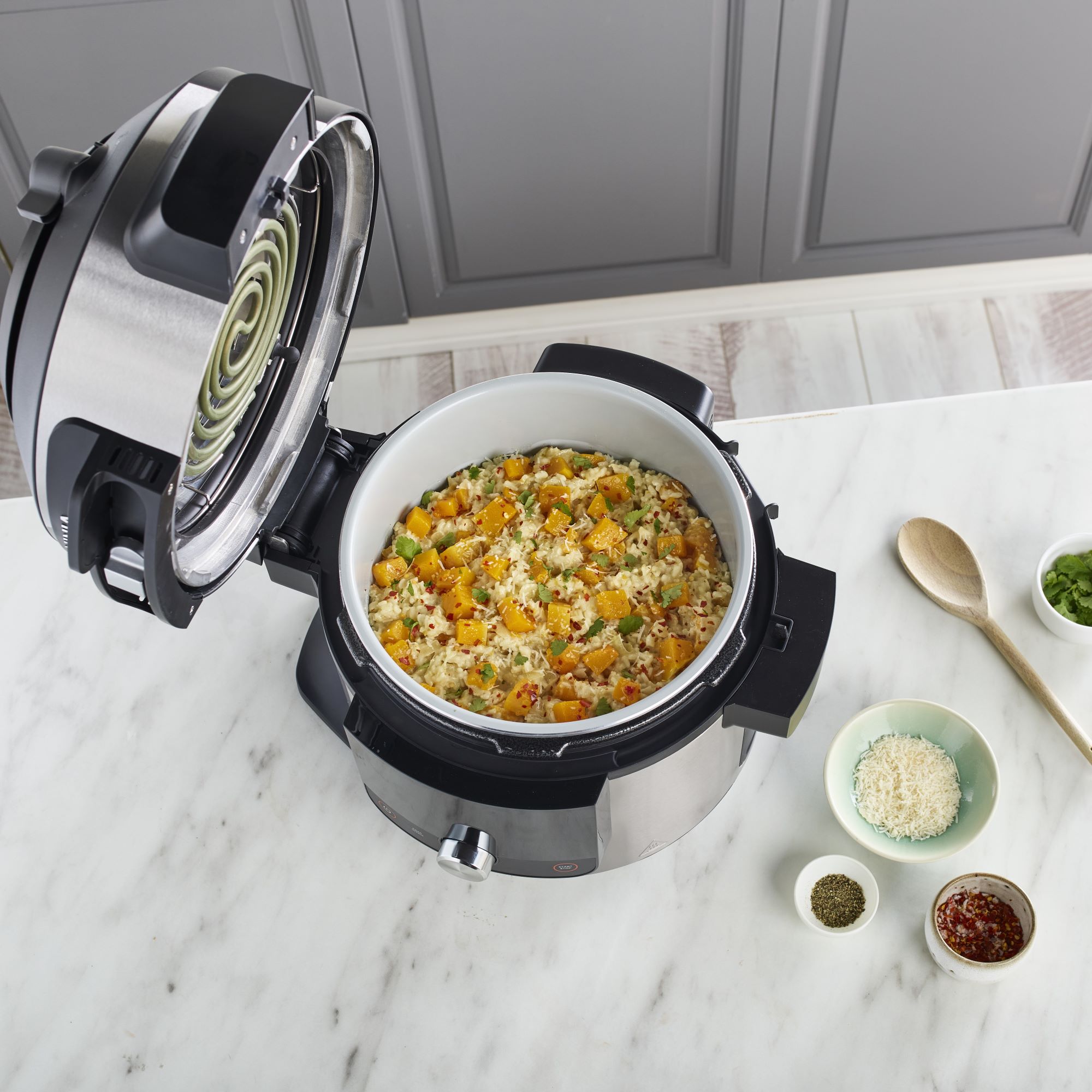
How to clean a multi-cooker
Our step by step guide will talk you through how to clean a multi-cooker. It's a job that is best done regularly, each time the multi-cooker has been used, to prevent any tough stains from building up.
What you need to clean a multi-cooker
- A soft bristle brush or non-abrasive sponge
- Washing up liquid
- White vinegar or a lemon
- Disinfectant spray
- A clean towel for drying
Step-by-step
1. Prepare for cleaning
The first step for how to clean a multi-cooker is to unplug the device and let it cool down. Once enough time has passed since using it, remove all of the separate parts included in your multi-cooker. The basket, rack, cooking pot and lid should all be taken out of the main body and placed to one side.
2. Clean the cooking pot and lid
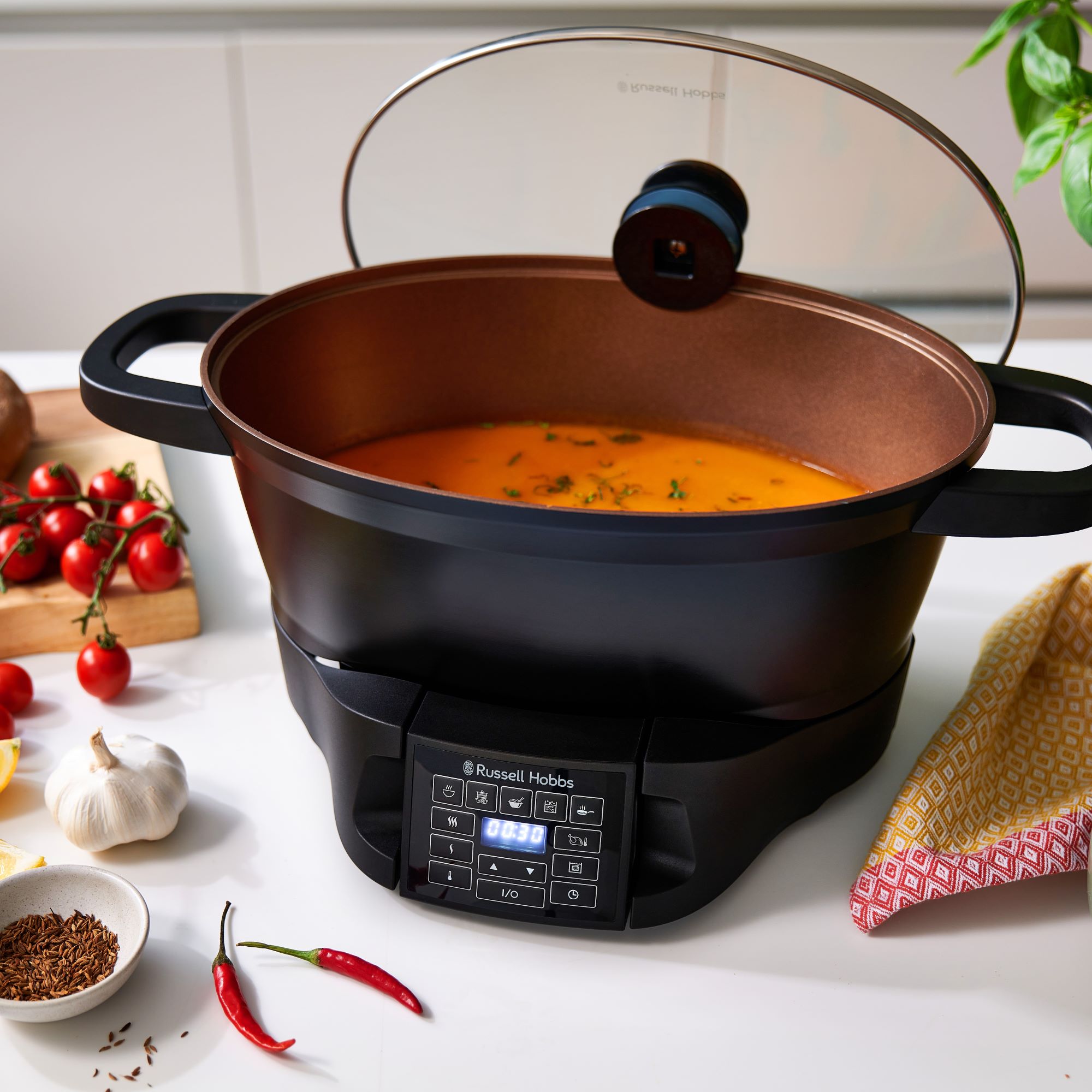
'We recommend cleaning both the cooking pot and lid from the unit each time after use, either by placing in the dishwasher if it is dishwasher safe, or by hand washing in warm soapy water,' says Cira Jones, Marketing Manager, Russell Hobbs. 'Ensure all food and crumbs are removed, which can burn if not cleaned properly and can taint the taste of the food you are cooking.'
Don't assume that your cooking pot can be put in the dishwasher - the Fast Slow Go Multi-cooker from Sage for example doesn't have a dishwasher-friendly pot, so it's always worth checking.
If cleaning the cooking pot by hand, use non-abrasive cleaners so you don't damage the non-stick surface. A soft-bristle brush and warm soapy water will do the job for lighter cleans.
3. Use lemon or vinegar to banish odours
The silicone ring on a multi-cooker can sometimes retain food residue and lingering odours. To get rid of this, fill the inner pot with 250ml of water, plus 250ml of white vinegar or half a lemon. Cleaning with vinegar or lemon is an effective method for decomposing stubborn food stains and banishing unwanted smells.
Use the pressure cook or steam setting and let the lemon or vinegar work its magic. 'Leave to steam for 10 minutes before emptying the pot, rinsing, and drying,' says Zoe McClean, Home Economist, Crockpot. 'This leaves the multi-cooker smelling fresh and new, making it ready for you to prepare some seriously sweet baked goods such as cheesecakes or steamed puddings without any remaining savoury food residue.'
You can use a scented white vinegar spray if you don't want your pot to carry that strong vinegar smell afterwards. Pour this into the pot alongside the water. Alternatively, add a cap of some concentrated disinfectant with the vinegar too.
4. Clean the exterior
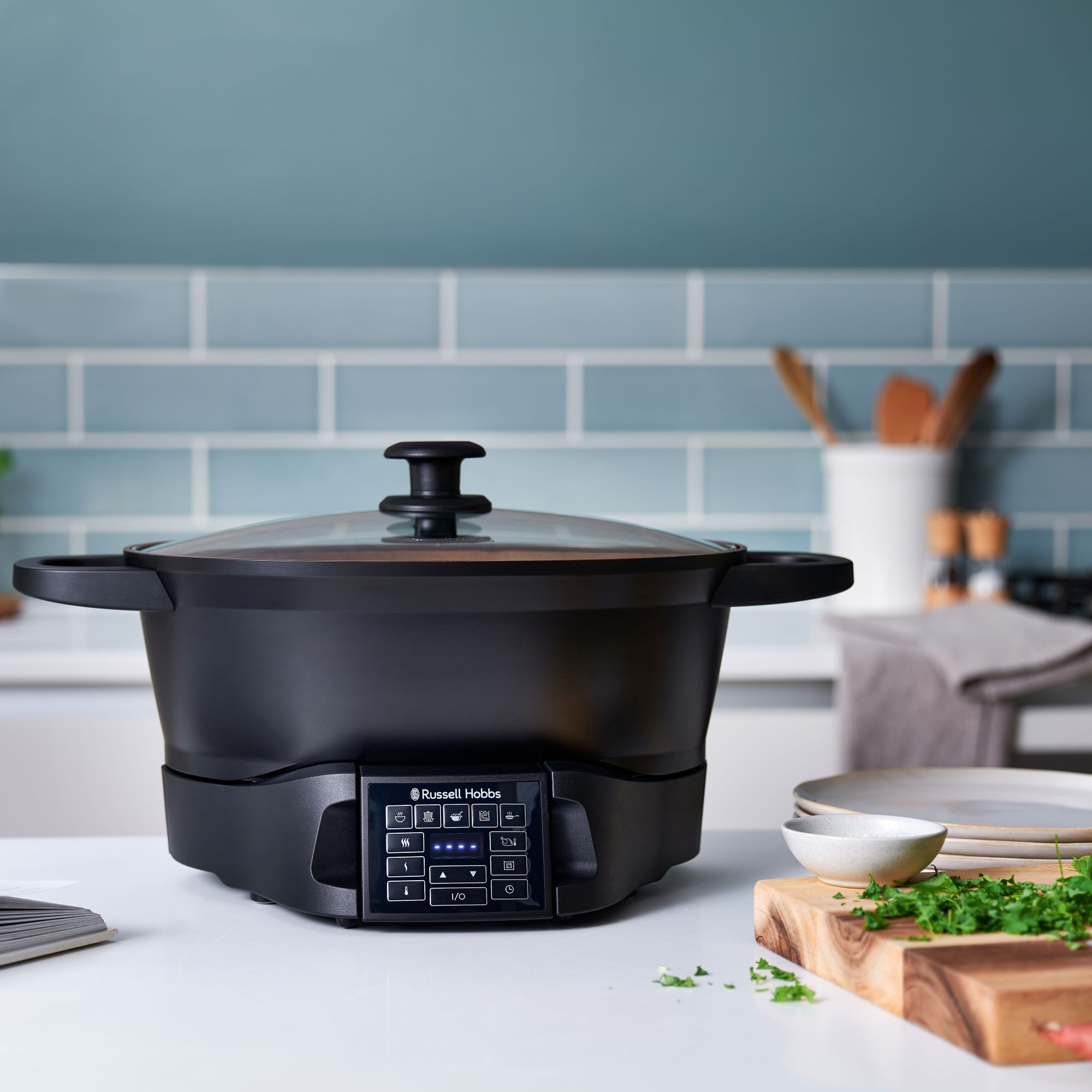
Knowing how to clean a multi-cooker should keep the appliance looking newer for longer, so it's important to regularly wipe down the exterior of the appliance after cleaning the inner pot and parts. You can use any multi-purpose cleaner for this and a sponge - again, a non-scratch sponge is best, we like these Spontex sponges from Amazon.
5. Dry off so it gleams
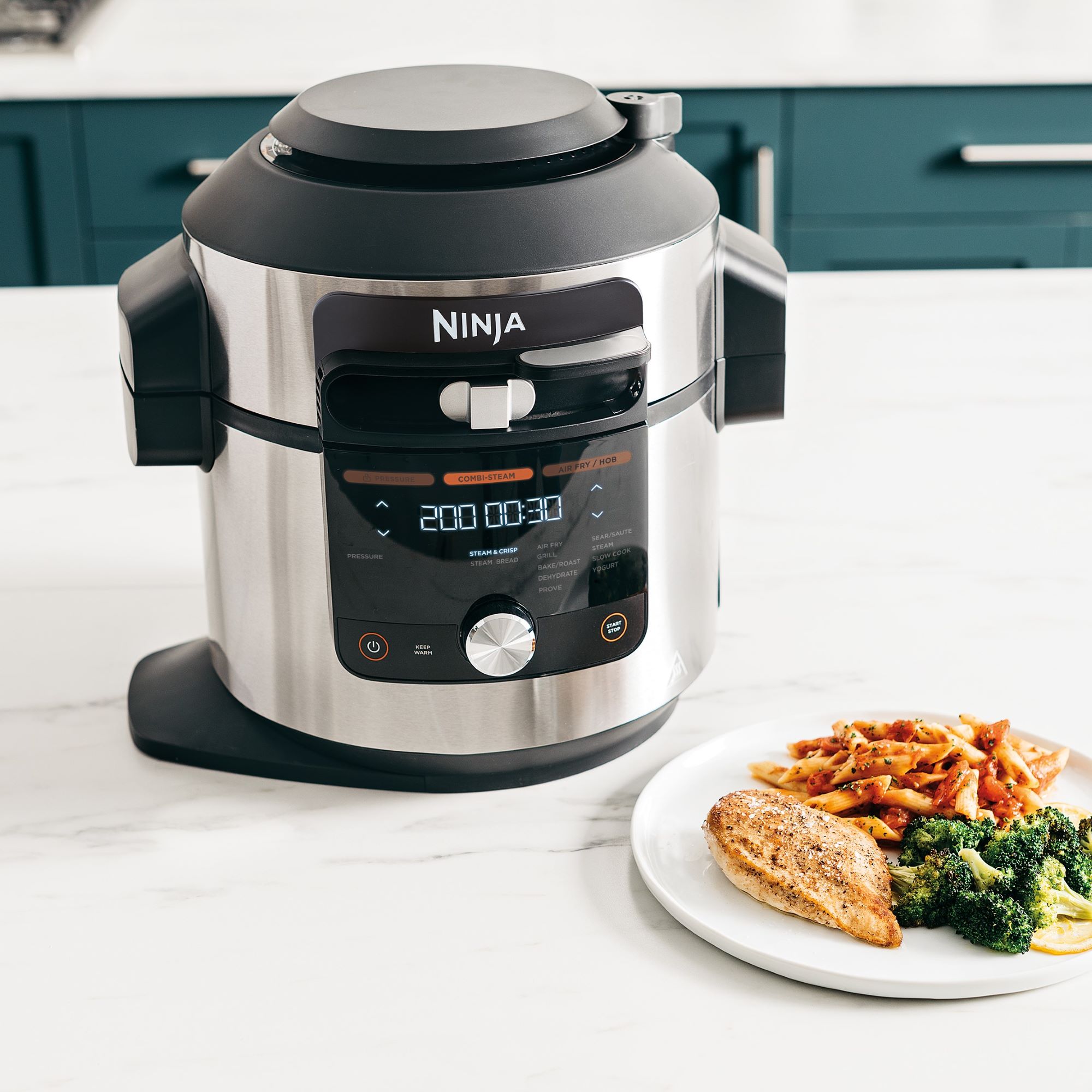
Lastly, dry off your multi-cooker with a clean tea towel. It's better to do this rather than leaving it to air dry so there isn't any water droplets leftover.
And that's it! You've learnt how to clean a multi-cooker, and you can continue to use your appliance as though it's brand new.
FAQ
How do you clean a non stick multi-cooker?
'Multi-cookers tend to be made with a non-stick coating - ideal for cooking - and cleaning - as long as they’re looked after properly,' says Laura Marsden, Marketing Manager, Marigold. 'The non-stick coating means you should avoid using strong chemicals or heavy-duty scourers on them, as it could damage the surface.'
The key to cleaning a non-stick multi-cooker is to avoid any harsh abrasives. Copper scourers, sponges with scratch pads, and hard bristle brushes shouldn't be used as these will damage the non-stick coating. Also, avoid bleach and other harsh chemicals as these might not react well with the surface.
In order to still give the nonstick multi-cooker a thorough clean, fill the pot with hot water and washing-up liquid. Let it steep for an hour and then empty the water out, wiping it around with a damp microfibre cloth.
How do you clean the inside of a rice cooker?
'Cleaning the interior of a rice cooker is similar to cleaning a multi-cooker if the pot is detachable,' says Jane Wilson, Cleaning Expert, Fantastic Cleaners. 'But, if it's not removable, clean it using the following steps:
- Disconnect it from the power source: Unplug the rice cooker and allow it to cool down before cleaning.
- Clean the inside: Pour some warm water into the cooking pot, along with a small amount of dish soap. Use a soft sponge or cloth to gently scrub the interior of the pot, paying special attention to any areas with stubborn food residue.
- Rinse with warm water: Rinse the pot thoroughly with clean water, making sure not to pour water onto the electrical components or immerse the base of the rice cooker in water or any other liquids. Also, make sure to remove all traces of soap.
- Dry it well: Wipe the interior of the pot dry with a clean towel.
- Clean the exterior: Use a damp cloth and mild soap if necessary. Again, don’t immerse the base of the rice cooker in water.
- Clean the steam vent: If your rice cooker has a removable steam vent, remove it and clean it separately with warm soapy water and a soft sponge or cloth. Rinse it thoroughly and dry it completely before reattaching it to the cooker.
- You are ready: Reassemble the rice cooker and store it in a cool, dry place.'
How do you clean a burnt bottom of a pressure cooker?
If burnt bits of food are sticking to the bottom of your multi-cookers pressure cook pot, it's time to reach for some natural - but powerful - cleaning agents. White vinegar, lemon, and baking soda will do the job, so grab whichever one you have to hand.
Fill the pot with warm water and your chosen cleaning agent, then use the pressure cooker setting for a minimum of 10 minutes. The pressure inside the pot will help your vinegar, lemon, or baking soda lift away the burnt bits stuck to the bottom of the pan.
If there are still some charred remnants lingering, you can make a paste with baking soda and use a cloth to work this into the stubborn bits. 'Mix baking soda and water together to make a thick paste,' says Thea Whyte, Small Appliance Expert, AO.com. 'Put the paste on a damp dish cloth and use it to gently scrub the affected areas. Once done, rinse off any residue and your multi-cooker will be as good as new.'
Get the Ideal Home Newsletter
Sign up to our newsletter for style and decor inspiration, house makeovers, project advice and more.

Katie has been writing freelance since early 2022, specialising in all things homes and gardens, following achieving a Masters in Media and Journalism. She started out writing e-commerce content for several of Future’s interior titles, including Real Homes, Gardeningetc, Livingetc, and Homes and Gardens. Since then she’s been a regular contributor on Ideal Home’s digital team, covering news topics, how-to guides, and product reviews.
-
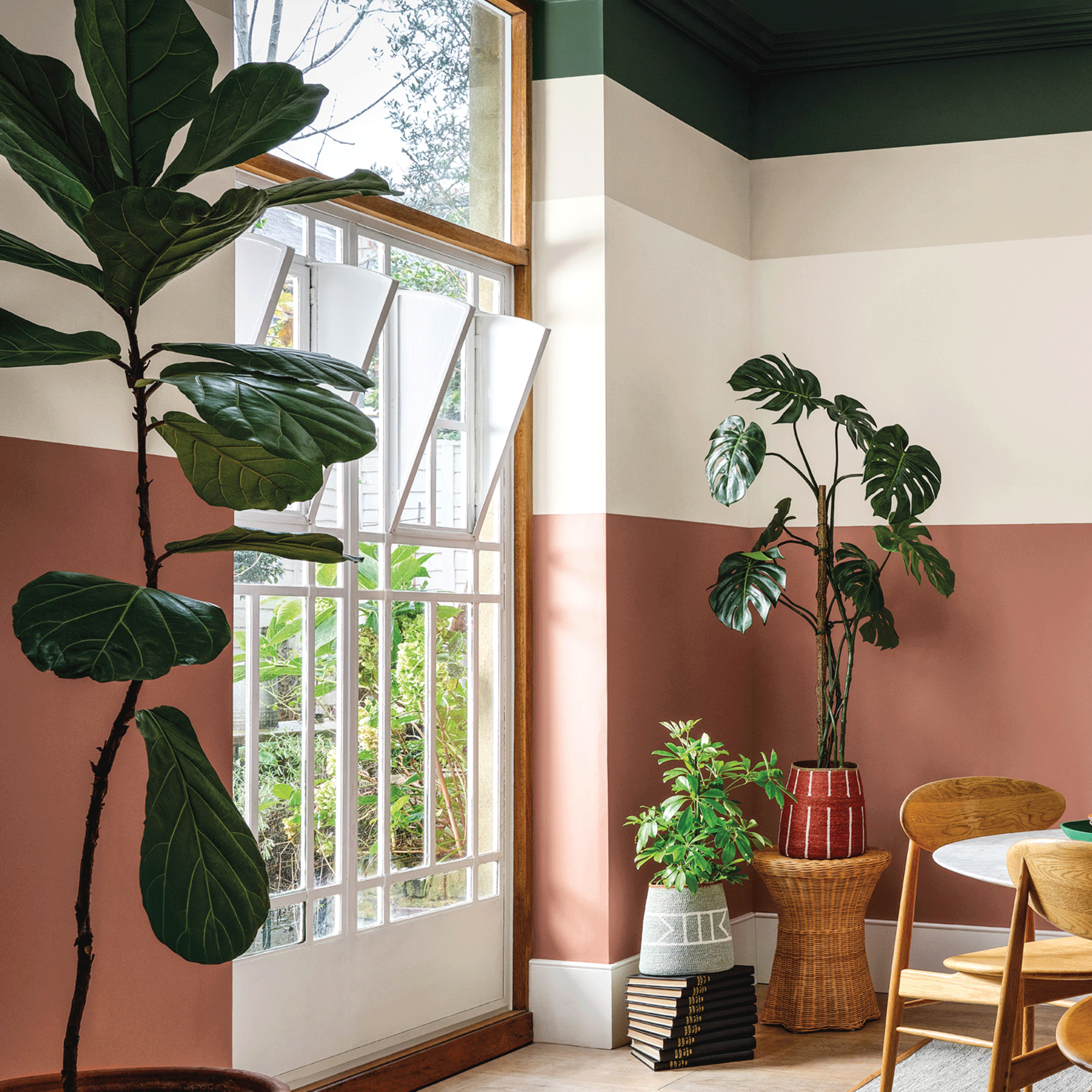 Crown Paint has launched new wall colours for the first time in three years, and changed how I think about neutral shades
Crown Paint has launched new wall colours for the first time in three years, and changed how I think about neutral shadesIs terracotta the ultimate neutral?
By Rebecca Knight
-
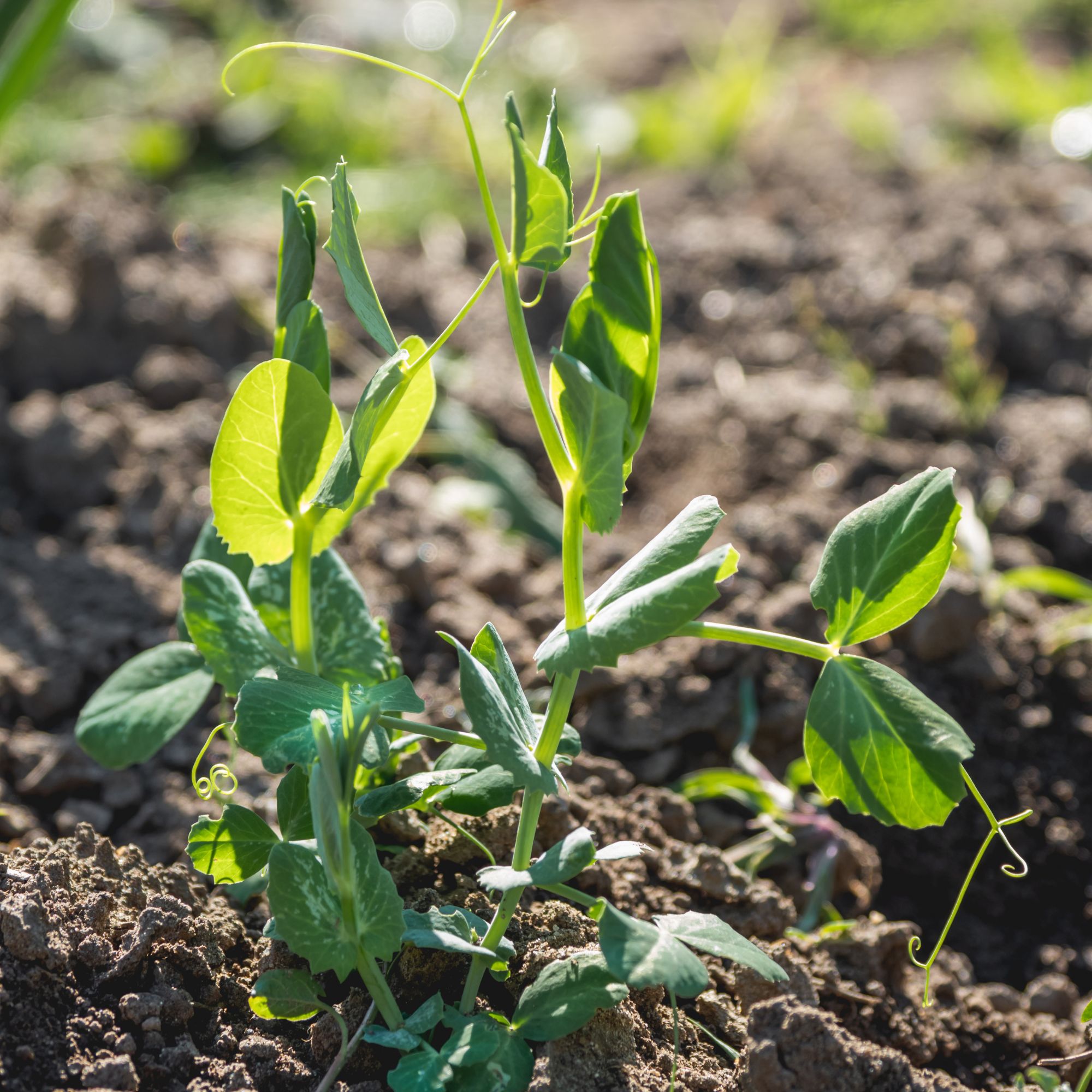 How to protect seedlings from birds – experts say there's a kind and clever way to stop them pecking
How to protect seedlings from birds – experts say there's a kind and clever way to stop them peckingYes, you can protect seedlings from birds without harming your feathered friends...
By Kayleigh Dray
-
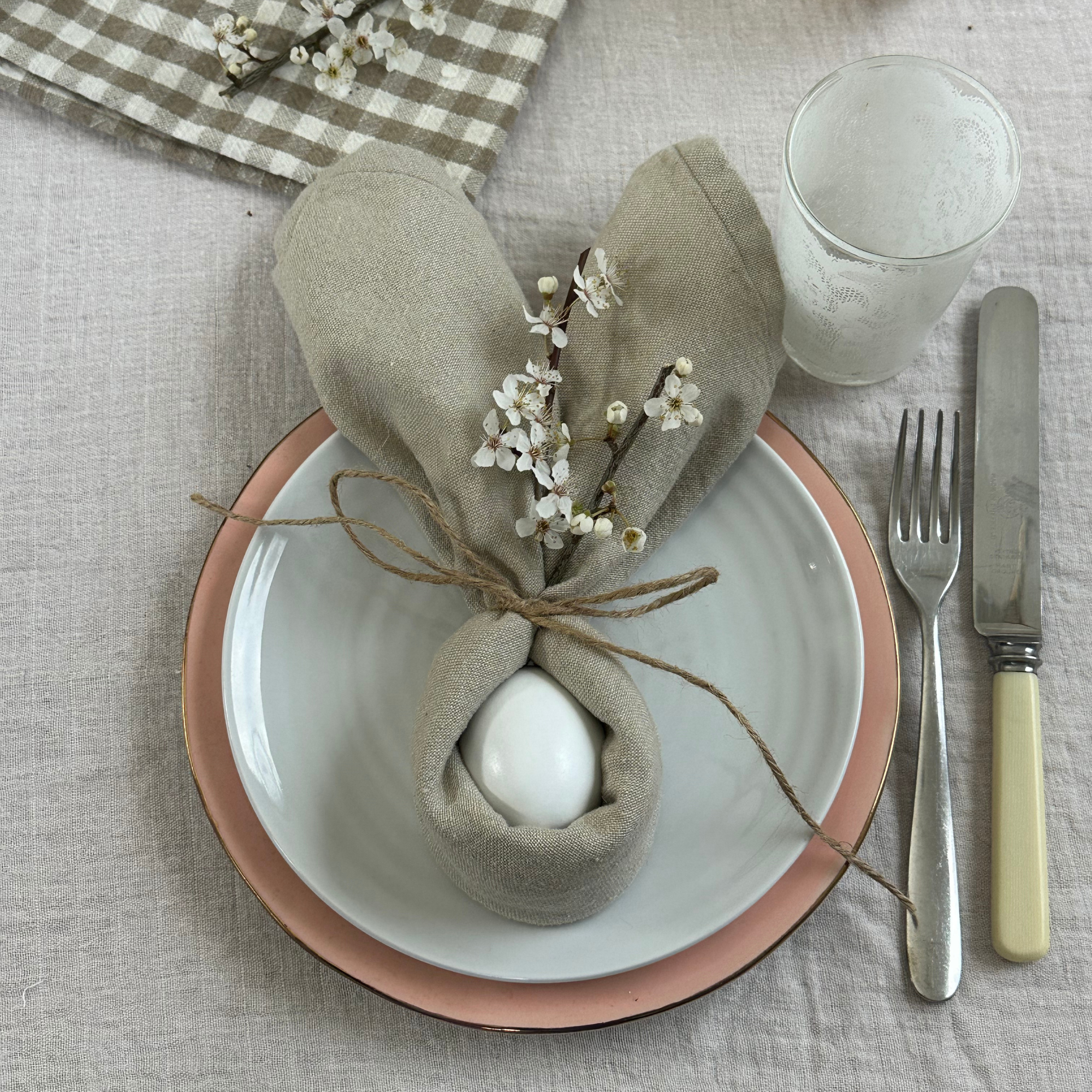 We tried the viral napkin bunny ears hack – it only takes five minutes and will take your Easter table to the next level
We tried the viral napkin bunny ears hack – it only takes five minutes and will take your Easter table to the next levelThis Easter craft is not only beautiful, but really easy to do
By Kezia Reynolds
